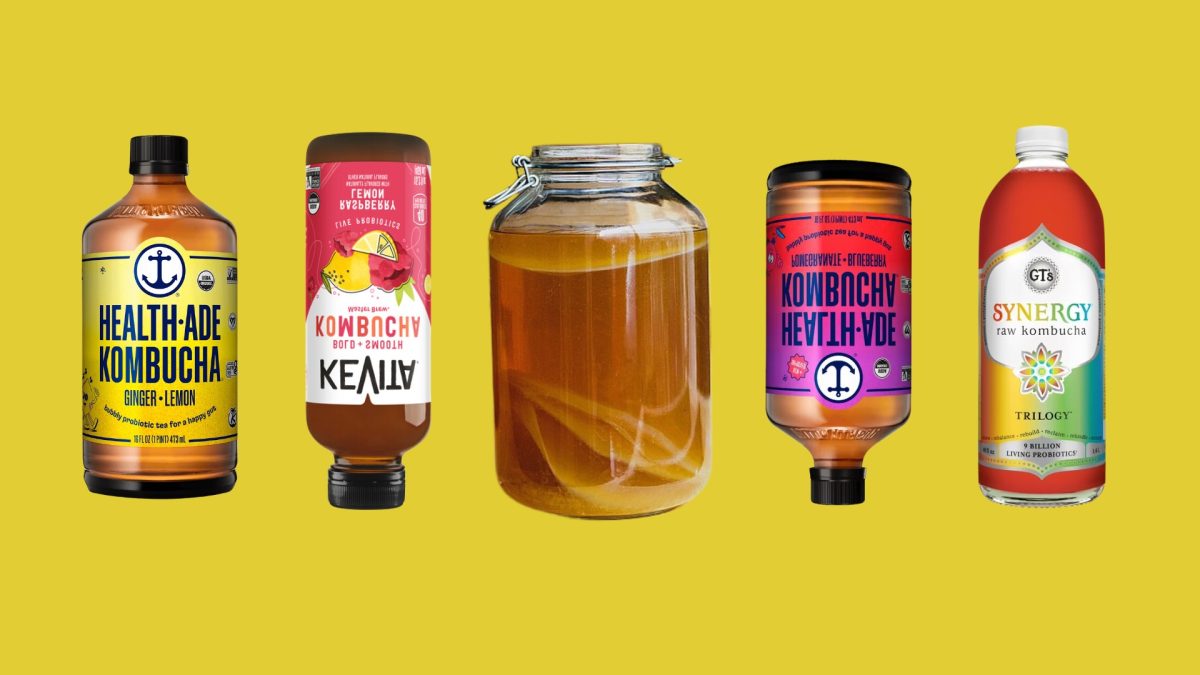With over 20 million views, Brittany Tomlinson, or as she is better known, Brittany Broski’s video of her trying kombucha for the first time took the Internet by storm. With her short video, Tomlinson not only created a viral meme format and built a strong platform for her online image, but also contributed to the rise in popularity of the drink in 2020. According to Good Culture Kombucha, kombucha sales increased by 200 percent that year.
Through the power of social media, countless health and fitness trends have taken over the internet. Among these are often some odd — perhaps creative — suggestions to, in the case of kombucha, improve a person’s gut microbiome or to aid in hydration. This is just one of many examples of this mysterious drink receiving online attention, although the people behind these trends tend to fall in an entirely different category of influencer. “Health and fitness” creators — some notable names being Doctor Mike Varshavski (@doctor.mike on Instagram), Leanne Ward (@the_fitness_dietitian), and Cassey Ho (@blogilates) — are the main contributors to the promotion of drinks like kombucha.
So, what is this tangy-yet-sweet drink that has Internet health culture in an unyielding tug of war between its conflicting reviews?
Kombucha is made by mixing tea with sugar and a yeast culture, commonly referred to as a SCOBY. The result is usually a slightly tangy, fizzy drink. Kombucha was discovered in ancient China, stemming from the Chinese term 红茶菌 (hóng chá jūn) and named after a doctor who spread word of its apparent healing qualities to help the Japanese emperor from sickness. Over the years, it slowly spread to Russia and eventually across the world. It is very customizable to people’s different tastes: the level of sweetness, type of tea, and amount of fermentation are all adjustable.
After meeting mainstream consumption in the USA, kombucha marketing has, at times, made the product seem a little too good to be true. Since its huge rise in popularity around 2018, American grocery stores have stocked up, allowing brands such as Synergy, Health-Ade, and Kevita to compete for shelf space so that customers are greeted with an array of brightly-colored bottles decorating their local Safeway freezer aisle. Marketing for these drinks is usually fairly similar across brands, promoting various health benefits and the unique taste. Kombucha has been advertised as a healer of all: promoting gut health, supporting immune systems, improving blood sugar and cholesterol levels, and aiding in faster metabolism.
Consequently, to some die-hard fans of the drink, the great lack of studies surrounding kombucha and its effects on the body may come as a shock. “If you’re drinking this for health benefits and not enjoying the taste, I’d say rethink your drink,” Harvard professor of nutrition and pediatrics, Dr. David Ludwig, said in an interview with the New York Times, objecting to drinkers that only drink kombucha because of the advertised benefits. Although the studies that do exist prove the presence of immune-system-boosting probiotic bacteria, there is not much other data to support the claims often seen on social media. (Not exactly breaking news—don’t trust everything that pops up on Instagram feeds.)
It may be interesting to hear about the history of kombucha and how it is made, never mind the (possible) health benefits, but it is just as important to know how this drink actually tastes. I have gathered some taste testers to give the most accurate review possible. The kombucha used was KeVita’s raspberry lemon flavor, reported on the bottle to have a “bold and smooth” texture.
First up was junior Alexa Jardine, who had never tasted the drink before and was curious to see what it was all about. “When I tasted it, I thought it was very bitter and gingery with a hint of lemon,” Jardine said. After the taste test, she gave it a 6.5/10
Sophomore Bridget Harwood, on the contrary, had tasted kombucha before but was willing to give her opinion on a new flavor. “I like kombucha, but I usually can’t tell if there’s another flavour in this because it’s just super gingery,” Harwood said. She rated the drink a 9/10.
Having tried kombucha a few times, my opinion on the drink differs between brands. Rather than drinking kombucha with its health benefits in mind, I drink it because of the refreshing taste it brings. I am more of a fan the more fizzy and citrusy it is (for anyone looking for recommendations, the brand Humm is one I like).
Although abundant in interesting texture and taste, kombucha is not for everyone, exemplified famously by Britanny Broski’s candid review. The fermented sourness of the drink takes some determination to get used to, but many individuals may wish to push past the initial flavor for the health benefits, however uncertain the benefits may be. Luckily, for those determined to find a fermented drink that they like, there are alternative ways to make kombucha fit your taste buds. A recent study by the American Chemical Society experimented with other plant-based drinks like apple juice and pomegranate juice, using the typical kombucha-making process, to create a different flavor in the resulting drink.
Another option is to make kombucha at home, altering a basic recipe to get the best results. Kombucha is fairly common to make from scratch, fermenting for most of the process and not needing much hands-on time.
Whether one is an avid consumer or a skeptical unbeliever, there are many questions surrounding this ancient drink. Is it a health cure-all? Is it a baseless hoax sponsored by influencers online? These theories may never be answered in anything but a “maybe” — so, how better to decide for yourself than to try it out? Your gut microbiome may (or may not) thank you.









